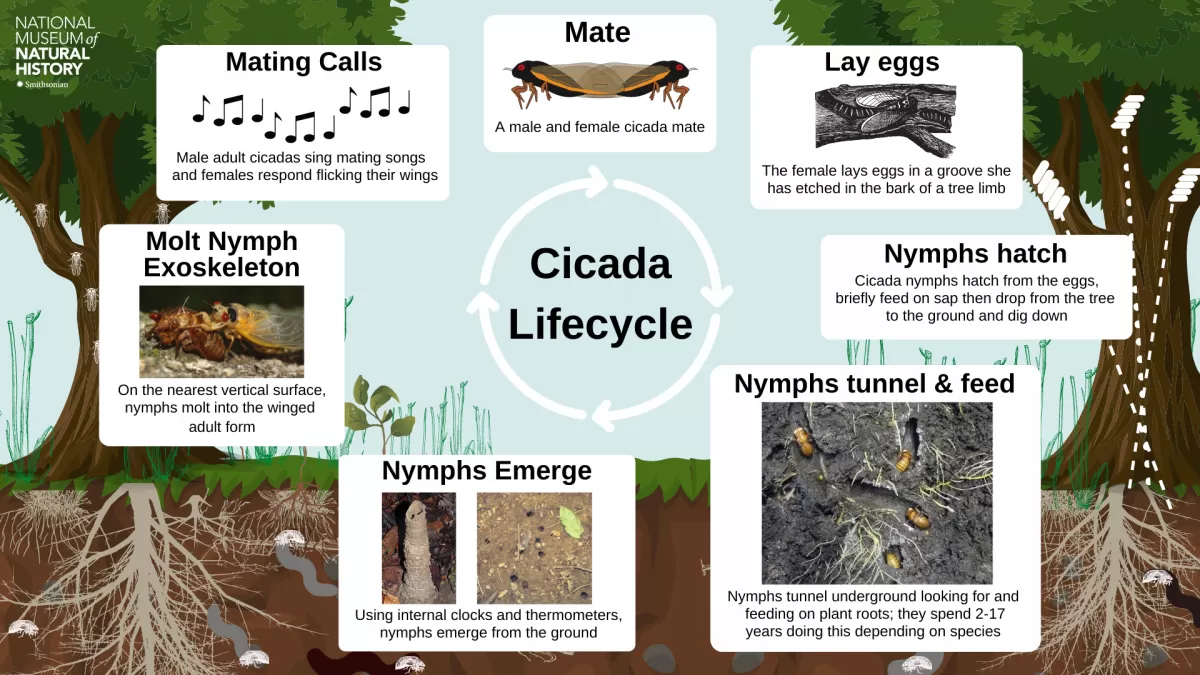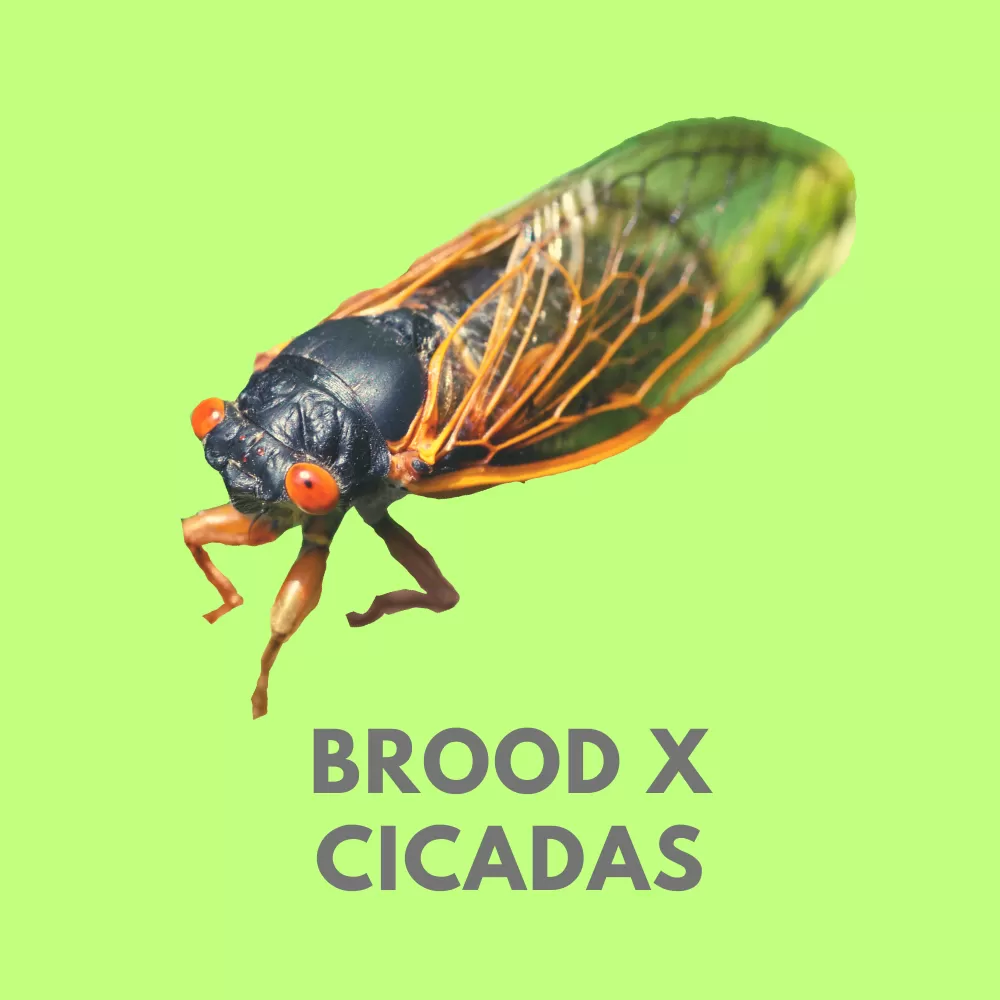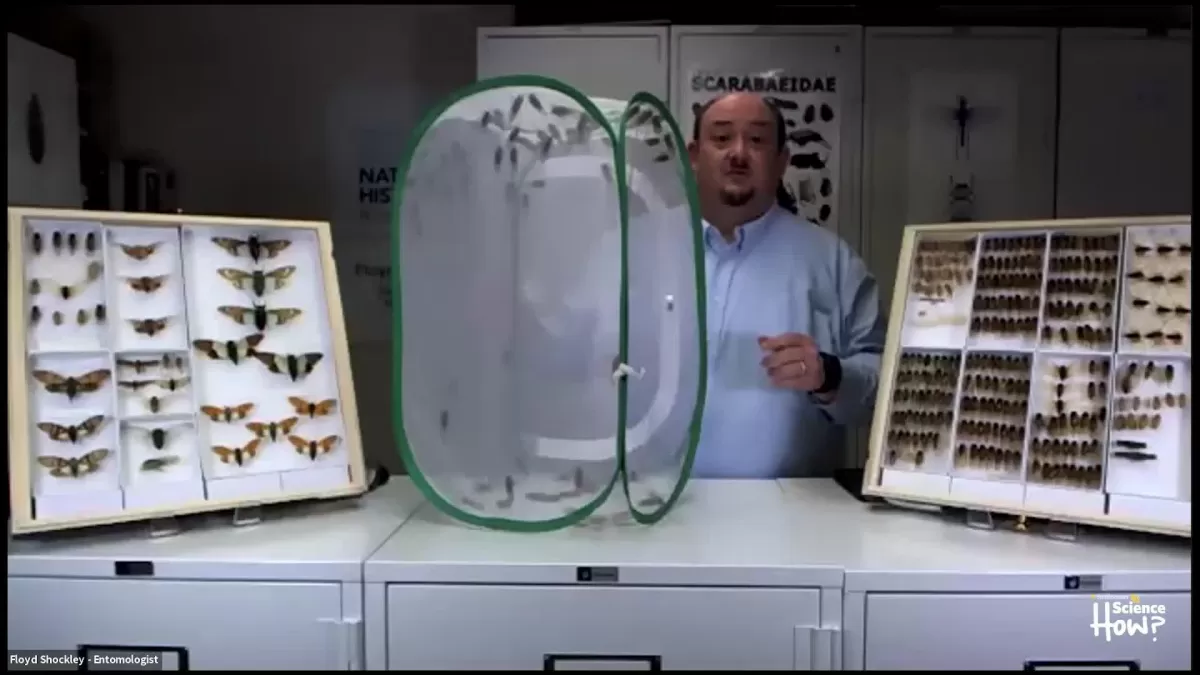Image


Periodical cicadas are insects that spend most of their lives underground as nymphs, feeding off the sap of tree roots. They emerge to transform into adults and mate. Some periodical cicadas emerge every 13 years and others emerge every 17 years. The males "sing" by vibrating a membrane on the sides of their bodies.
After mating, the female makes slits in tree branches and lays eggs there. The eggs hatch six to seven weeks later, the nymphs fall to the ground and go into the soil, and the cycle begins again. The adult periodical cicadas only live three to four weeks.
Periodical cicadas emerge in groups called broods. In May 2021, Brood X (pronounced "Brood Ten") emerged in 15 states in the Mid-Atlantic and Midwest. There were billions of Brood X cicadas! Don't worry, they don't bite.
We have compiled a collection of digital resources and experiences to explore the natural history of cicadas. The resources are all complementary, aiming to help students, teachers, and anyone interested learn a bit more about cicadas.
The interactive module linked at the top is the most robust experience, and integrates the other digital media resources that are also listed on this page.

Understanding a cicada’s life history can help quell fears about them and even spark curiosity and interest in them. This interactive module, The Natural History of Cicadas, will provide learners with an overview of the natural history of cicadas through videos, audio, images, graphics, and text. Each section of the lesson concludes with a fun interactive that reinforces learning, helping your learners gain these skills:
There are about 3,000 species of cicadas worldwide and they all have a similar life cycle. This video provides a brief overview.

Download the handout below.

Feeling curious, nervous, or excited about the cicada emergence? This podcast is for you! Learn about cicadas and the Brood X emergence directly from an expert: Smithsonian Entomologist Floyd Shockley. The podcast was moderated and produced by museum educator Maggy Benson.
Visit the Cicada Safari App webpage to learn more about tracking cicadas and using the app that Floyd mentioned in the podcast!

Brood X, one of the broods of periodical cicadas that spends 17 years underground as nymphs, emerged in the Eastern United States in 2021. In this video, Smithsonian Entomologist Floyd Shockley teaches us about these cicadas, their special adaptations and life cycle and unique things about their natural history that you may not have known. Floyd joins us from the National Museum of Natural History, where he shows viewers live cicadas and cicadas preserved in the Smithsonian's Entomology collection. This Zoom webinar aired May 26, 2021. Watch the cicada webinar video.
Image at top of page by James St. John, CC BY 2.0 via Flickr. Cicada Origami by Jacque Lynn Davis, CC BY-NC 2.0 via Flickr; original origami image edited to read "17 year cicada" instead of "13 year cicada."